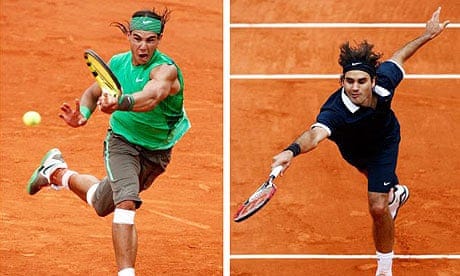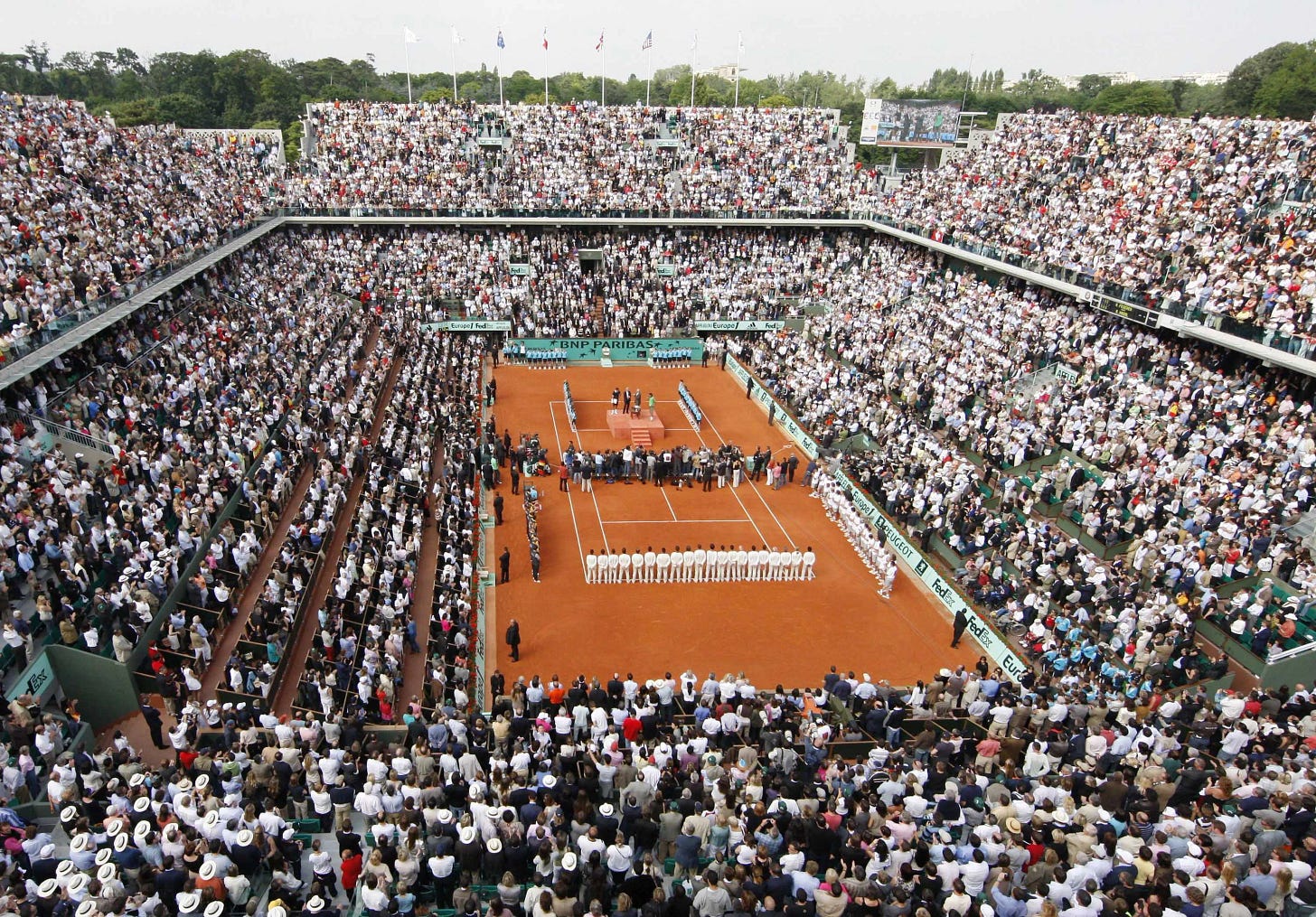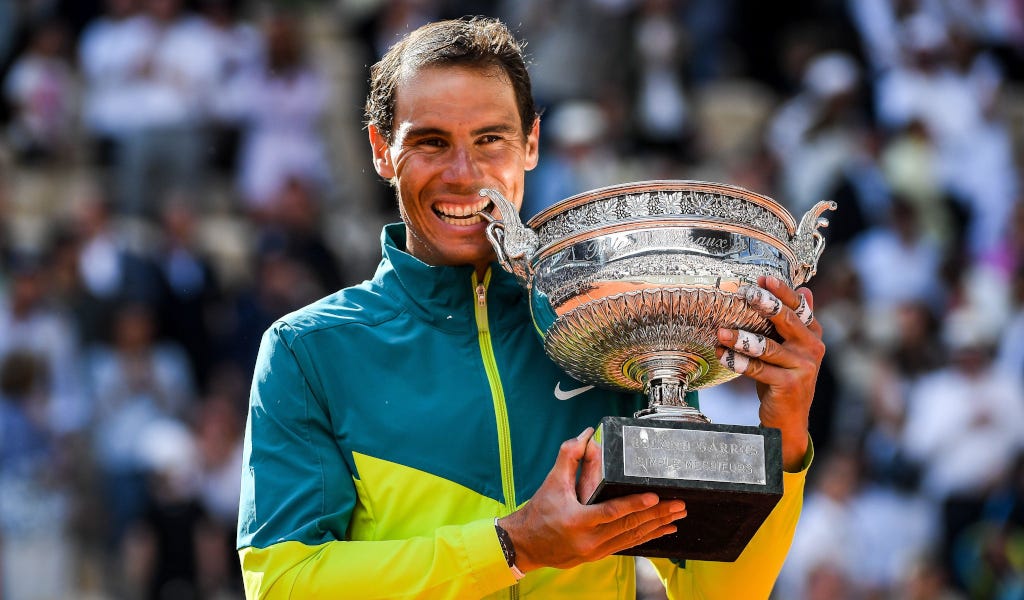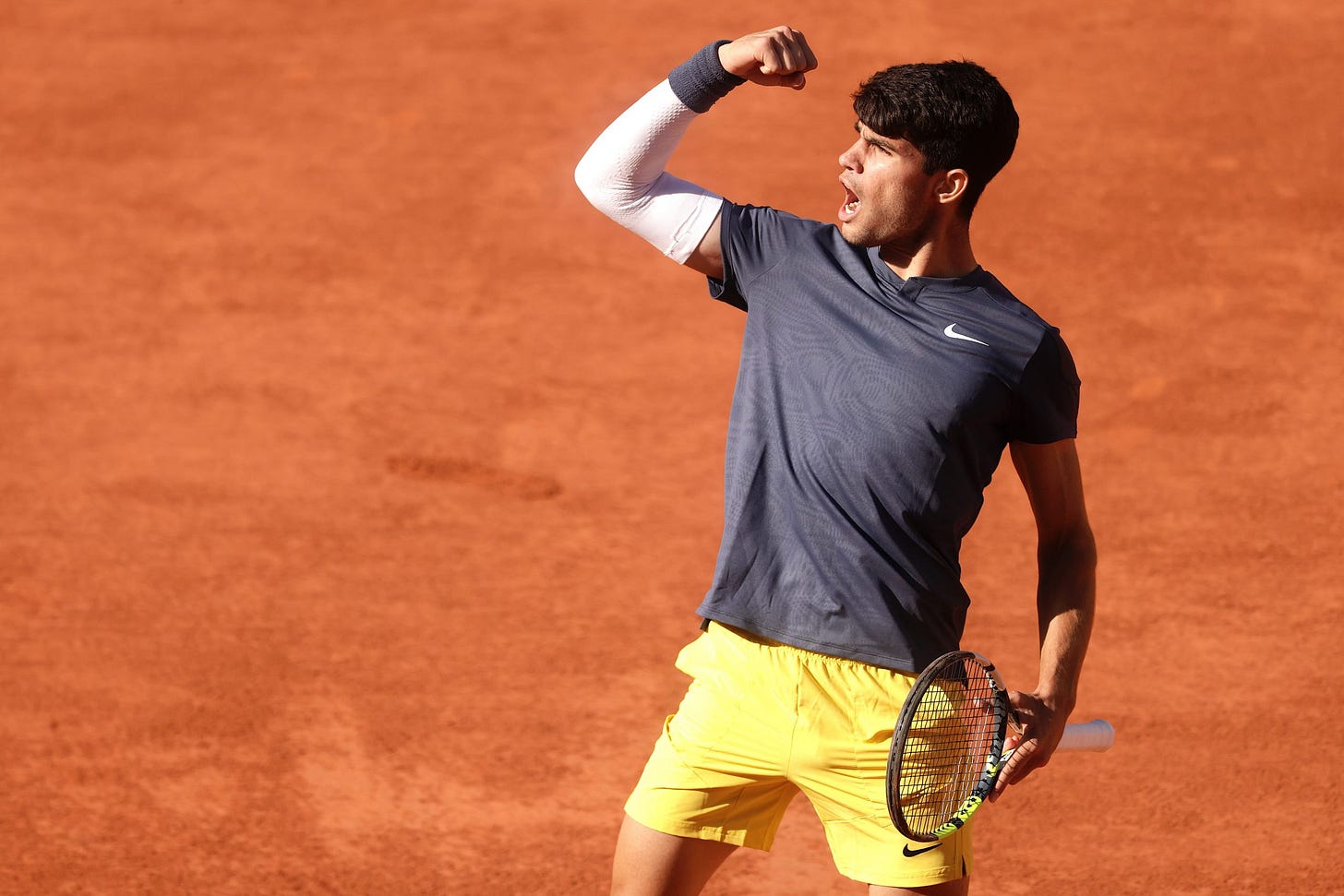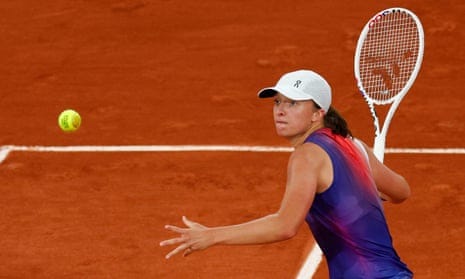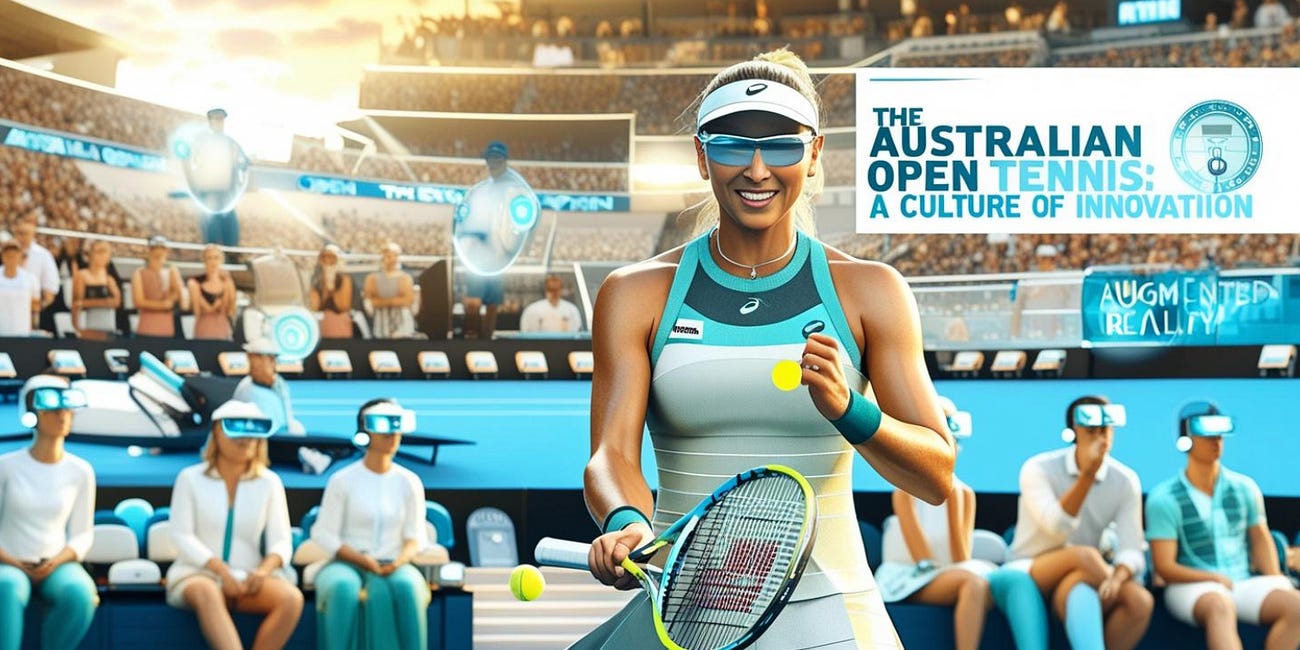🎾 Upside Special Report: Roland-Garros: The Legacy, the Battles, the Impact, and the Innovation of the French Open
This weekend the French open (Roland Garros) finals are taking place in Paris. So as part of that, we thought it would make sense to publish a special report about Roland Garros, its history, iconic finals, legends, the new tennis generation, and the technologies used at the tournament. The French Open is more than just a Grand Slam tennis tournament; it’s a cultural touchstone, a test of human endurance on the slowest surface in the sport, and increasingly, a showcase for cutting-edge technology and innovation. As the only Grand Slam event played on clay, Roland-Garros remains a unique spectacle in the tennis calendar, known for both its tradition and its forward momentum.
A Century of Red Clay: The History of Roland-Garros
The origins of the French Open date back to 1891, when it began as the “Championnat de France” and was restricted to members of French tennis clubs. Its transformation into a major international tournament came in 1925, when it was opened to foreign players and became one of the four tennis Grand Slams alongside Wimbledon, the US Open, and the Australian Open.
The move to its current home—Stade Roland-Garros—in 1928 was made to honor France’s tennis heroes after their Davis Cup victory. The stadium was named after Roland Garros, a World War I aviator and national hero, known for being the first man to fly across the Mediterranean.
Over the years, Roland-Garros has grown in both prestige and spectacle. What makes it so distinctive is its red clay surface—a mixture of crushed brick, limestone, and coal residue—which dramatically slows down the ball and produces longer rallies. This unique playing surface requires elite physical conditioning and a tactical approach, creating a very different dynamic than other Grand Slam events.
The Most Iconic Finals at Roland-Garros
🏆 Rafael Nadal vs. Roger Federer (2008)
In a final that lasted just under two hours, Nadal demolished Federer 6–1, 6–3, 6–0, in what many consider the most dominant Grand Slam final performance of all time. This win gave Nadal his fourth consecutive French Open title, cementing his status as the undisputed "King of Clay."
🏆 Björn Borg vs. Ivan Lendl (1981)
Borg's final victory at Roland-Garros was a masterclass in baseline play and mental toughness. He won in four sets and walked away with his sixth French Open title, an achievement that stood as a record until Nadal shattered it decades later.
🏆 Monica Seles vs. Steffi Graf (1992)
This match is often cited as one of the greatest women’s finals in history. The two legends went head-to-head for nearly three hours, with Seles edging Graf 10–8 in the final set. It symbolized the changing guard in women's tennis, as Seles dominated the early ’90s before her tragic stabbing the following year.
🏆 Jim Courier vs. Sergi Brugera (1992)
In the 1993 Roland-Garros final, Spain’s Sergi Bruguera stunned two-time defending champion Jim Courier in a grueling five-set battle, winning 6–4, 2–6, 6–2, 3–6, 6–3. Courier, then world No. 1 and aiming for a third straight French Open title, was outlasted by Bruguera’s relentless baseline play and clay-court mastery. The victory marked the beginning of a new era for Spanish tennis, as Bruguera became the first Spaniard in nearly a decade to win the title and set the stage for future champions like Carlos Moyà, Juan Carlos Ferrero, and Rafael Nadal.
🏆 Simona Halep vs. Sloane Stephens (2018)
After multiple heartbreaks in Grand Slam finals, Halep’s resilience paid off. Down a set and a break, she roared back to win her first major title, showcasing the mental fortitude that clay courts often demand.
🏆 Novak Djokovic vs. Stefanos Tsitsipas (2021)
Djokovic's five-set comeback from two sets down against the rising Greek star was a study in resilience and adaptability. It also marked Djokovic’s second French Open title, bringing him closer to completing the double Career Grand Slam—a feat achieved by only a handful of players in history.
Economic and Cultural Impact on Paris and France
💶 Economic Contribution
Roland-Garros is one of the most economically significant annual sporting events in France. According to data from the French Tennis Federation, the tournament injects over €300 million into the French economy each year. The sectors that benefit the most include:
Tourism and Hospitality: The tournament attracts over 600,000 attendees, including tens of thousands of international visitors who stay in Paris hotels, dine in local restaurants, and explore the city.
Retail and Fashion: As a lifestyle event, Roland-Garros is closely tied to Parisian fashion and culture. Exclusive merchandise collaborations (e.g., with Lacoste and Wilson) generate substantial commercial revenue.
Media and Sponsorships: The tournament is broadcast in over 220 countries, creating immense brand exposure for sponsors like Rolex, Emirates, BNP Paribas, and Peugeot.
🎭 Cultural Influence
Roland-Garros is part of France’s global identity. Its Parisian location, combined with its historical legacy and elegance, mirrors the city’s artistic and intellectual spirit. Beyond the sport itself, the tournament integrates fashion, music, and gastronomy—making it a complete cultural experience.
Furthermore, Roland-Garros represents a symbol of resilience. Whether it was during World War II, political unrest, or the COVID-19 pandemic (when the tournament was moved to autumn for the first time), it has always found a way to adapt and maintain its importance in the global sports calendar.
Rafael Nadal: The King of Clay and the Soul of Roland-Garros
For nearly two decades, Rafael Nadal has defined Roland-Garros. From his first appearance in 2005, when he won the title on his debut at just 19 years old, to his 14th crown in 2022, Nadal’s dominance on the red clay of Paris is arguably the most impressive record in the history of professional tennis. With a career record of 112–3 at Roland-Garros, Nadal has spent almost 20 years turning the tournament into a personal fortress.
His playing style — built around relentless physicality, extraordinary footwork, and a heavy left-handed topspin forehand — is tailor-made for clay. But beyond tactics, what has truly set Nadal apart is his mental toughness. Time and again, he has returned from injury or setbacks to reassert his supremacy on Court Philippe-Chatrier, earning him not just admiration, but awe.
Nadal has had legendary battles in Paris — with Roger Federer, Novak Djokovic, and Stan Wawrinka — but more than individual matches, it’s the consistency, humility, and emotional connection with the crowd that have made him beloved. His five consecutive titles from 2010 to 2014, his emotional victory in 2020 amid the COVID-19 pandemic, and his surprising return to form in 2022, defeating Djokovic and young Carlos Alcaraz en route, all contribute to a mythology rarely seen in modern sports.
As Nadal retired last year, Roland-Garros feels like it's on the verge of a generational shift. But his legacy is already immortal. A statue of Nadal, unveiled in 2021 outside Court Philippe-Chatrier, now watches over the grounds as a permanent tribute to the most dominant figure the tournament has ever known. As shown in the video below, Roland Garros officials also unveiled a plaque commemorating his footprint on the main court this year.
The Next Chapter: Emerging Stars at Roland-Garros
As the Nadal era nears its close, a new generation of tennis stars is writing the next chapter at Roland-Garros — and they’re doing it with power, flair, and global appeal.
🇪🇸 Carlos Alcaraz
Often seen as Nadal’s spiritual successor, Carlos Alcaraz is a Spanish phenom with an explosive playing style and boundless energy. In 2023, he reached the semifinals in Paris and won the US Open and Wimbledon, becoming the youngest men’s world No. 1 in history. His athleticism, charisma, and shot-making have drawn comparisons to a young Nadal, but Alcaraz brings his own electric style that thrives in big moments. In 2024, he made another deep Roland-Garros run, solidifying his reputation as a future champion — and perhaps, the next king of clay.
🇮🇹 Jannik Sinner
Jannik Sinner has quickly become one of the most consistent performers on tour. With a calm demeanor and a devastating baseline game, Sinner’s breakthrough Grand Slam win at the 2024 Australian Open announced his arrival at the top. His clay-court game continues to evolve, and his matches at Roland-Garros are increasingly must-watch affairs.
🇩🇰 Holger Rune
The fiery Danish talent Holger Rune has already reached the quarterfinals of Roland-Garros and shown the guts to challenge the elite. His aggressive baseline play, confidence, and youth make him a genuine threat on clay. In previous years, Rune has pushed both Djokovic and Ruud to the limit, demonstrating he can go deep in the Paris draw.
🏆 The Women’s Game: Swiatek and Beyond
On the women’s side, Iga Świątek has already established herself as the Queen of Roland-Garros, winning titles in 2020, 2022, and 2023. Her combination of power, movement, and tactical intelligence on clay is unmatched. At just 23, she may already be on track to build a Nadal-like legacy in Paris.
Picture: Iga Świątek
Behind her, a talented crop of challengers — including Coco Gauff, Aryna Sabalenka, Elena Rybakina, and Mirra Andreeva — is shaping an exciting future for women’s tennis. Gauff, who reached the Roland-Garros final in 2022 and 2025, continues to improve each year, while Sabalenka’s sheer force and confidence make her a constant threat on all surfaces.
Picture: Coco Gauff
A Legacy in Transition
While Roland-Garros has been synonymous with Rafael Nadal for two decades, the torch is now being passed. The emergence of new stars like Alcaraz, Sinner, Świątek, and Gauff ensures that the tournament’s future remains as bright as its past. These athletes are not just inheriting the stage — they are redefining it, bringing new playing styles, diverse backgrounds, and fresh energy to the red clay of Paris.
In this period of transition, Roland-Garros remains the ultimate test of greatness. Whether it’s Alcaraz carving or Jannik Sinner their own path, the tournament continues to capture the drama, beauty, and relentless pursuit of excellence that make tennis one of the world’s most compelling sports.
Technological Innovation at Roland-Garros
Despite its traditionalist reputation, Roland-Garros is quietly one of the most technologically advanced sporting events in the world.
🎾 1. Electronic Line Calling
For decades, Roland-Garros resisted automated line-calling due to the visible ball marks on clay. But in 2025, all courts adopted Hawk-Eye Live, marking a technological shift and aligning with the standards of other Grand Slams. This has enhanced fairness, reduced controversy, and sped up play.
📊 2. AI-Powered Match Analysis
Through a long-standing partnership with IBM and Infosys, the French Open now offers real-time, AI-generated analytics, including:
Match predictions
Player movement maps
AI commentary
Video highlight generation based on crowd noise, shot quality, and rally length
These tools are integrated across TV broadcasts, the Roland-Garros app, and in-venue screens, giving fans and coaches deep insight into match dynamics.
📡 3. Smart Courts and Tracking Tech
Every court is equipped with sensor-based cameras and tracking systems that analyze:
Ball speed and spin
Player movement and distance covered
Shot placement and trajectory
Coaches can use this data post-match to refine tactics or assess player fatigue.
🌐 4. Digital Fan Experience
Roland-Garros has made strides in digital engagement:
Augmented reality experiences let fans explore the stadium virtually.
Interactive 3D courts and match simulations enhance second-screen viewing.
AI-powered chatbots assist with navigation, ticketing, and real-time stats for fans onsite.
♻️ 5. Sustainability Tech
Roland-Garros has introduced eco-friendly technologies including:
Solar panels on Court Suzanne-Lenglen’s retractable roof
Rainwater recycling systems
Sustainable court materials
Digital-only ticketing to reduce paper waste
Conclusion: Roland-Garros as a Living Legacy
Roland-Garros is more than a tournament. It is a multi-layered celebration of athletic greatness, tradition, innovation, and the cultural elegance of Paris. It holds a sacred place in tennis history, where legends are made and tested in long rallies under the French sun.
As the sport modernizes, Roland-Garros remains both a guardian of tradition and an innovator—balancing legacy and leading-edge transformation. Whether you're a die-hard tennis fan, a curious visitor, or a tech-savvy spectator, the French Open offers something no other Grand Slam can: the chance to witness history, innovation, and culture converge on a surface that demands the very best from the best.
You may also like:
🎾Upside Analysis: The Australian Open Tennis' Culture of Innovation
The 2025 Australian Open starts today until January 26 at Melbourne Park, so we thought it would make sense to write an analysis about the Australian open tennis. Over the past decade, the Australian Open Tennis has been a pioneer in terms of innovation showcasing some of the most innovative technologies (AI, VR..) at its Grand slam tournament. In this …


